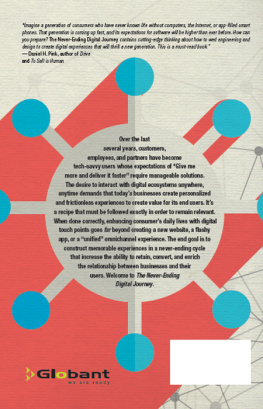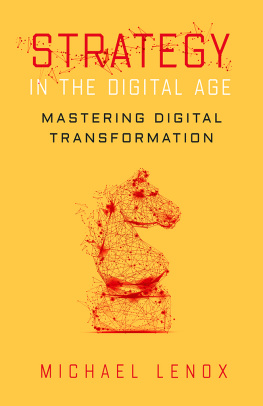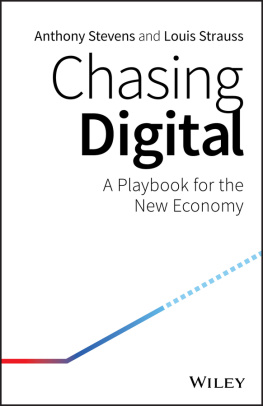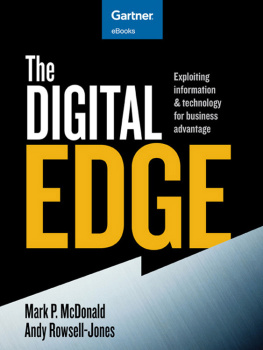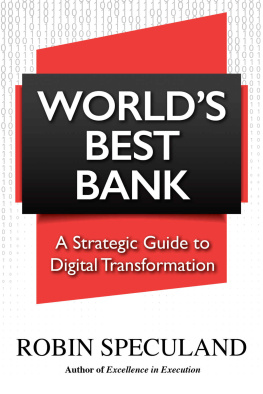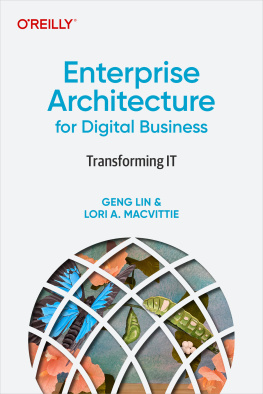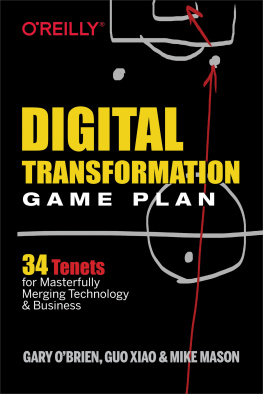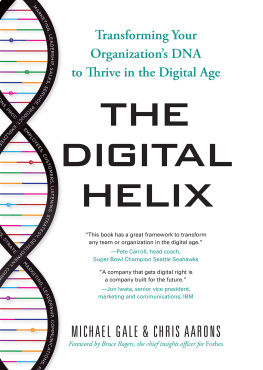

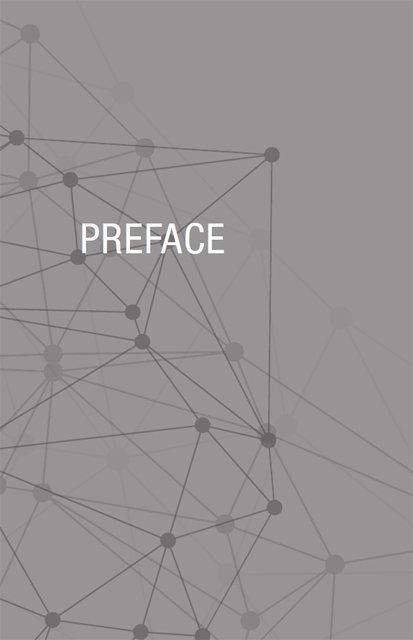
E VERY BUSINESS UNDERSTANDS THE critical importance of econnecting to its customers. Being close to the customer helps companies establish a conversation and path of discovery that helps drive innovation, thus opening new possibilities and inviting valuable feedback. The very nature of connecting and attracting feedback has long been used to improve products and business offerings for customers.
Think back to the 1950s and the heyday of New Yorks legendary Madison Avenue Mad Men culture. The colossal advertising agencies pushed products through iconic campaigns, such as creating the Marlboro Man to sell cigarettes. These campaigns defined particular personalities and characteristics and suggested a cultural set of preferences, including what you were supposed to wear and look like. Many followed those suggestive and powerful marketing campaigns.
The agency model endures today, though it has been impacted by the arrival of new technologies and ubiquitous access to information. The idea, however, of driving consumers down a single path with communications has gone out of fashion. Todays sophisticated consumers tend to perceive these advertising campaigns as an annoyance with little discernible value.
Our all-digital society leverages an assortment of advanced technologies to reach consumers, penetrate their world, and deliver a persuasive message more effectively. In this new landscape where technology and Millennials are synonymous, poorly conceived and delivered unilateral digital marketing campaigns are viewed as intrusive and impersonal.
The future of digital engagement with consumers demands uniqueness and personalization.
In 2007, Steve Jobs captured the imagination of consumers with Apples smartphone. This event marked the beginning of a new wave of innovation directed at the end-user market. It also allowed brands to reach the consumer whenever and wherever they were.
Jobss phenomenon created a new ecosystem of businesses. Many traditional industries looked at this new sensation rocking the marketplace and felt threatened. They rushed to embrace the new digital conversation by conceiving products molded from their Web environment and grafted onto a mobile platform. Most of those efforts generated lackluster products and results. Many businesses mistakenly believed what they had running on the Web would work just as well on a mobile device. They did little or nothing to leverage the native features of the new phones. In essence, there were few results demonstrating an improved experience.
The mobile era was born. It wasnt the first time businesses found themselves behind the curve, desperately trying to catch up to the newest thing.
In this new context, organizations need to embrace technology and unleash their innovation potential in order to transform the future of their business. The concept of digital needs to evolve. We are not talking about a new media channel, but rather a foundation to build current and future digital experiences that customers and employees want.
Digital native businesses have discovered ways to establish long-lasting ties with customers by focusing on their experience. We call these turbocharged digital tech companies disruptors, because they perceived imperfect experiences and made them better. In doing so, these companies shook the very foundation of entire industries and grabbed market share from incumbents. These disrupters, for example, have deeply impacted the industries of music and personal transportation with their digital savvy. Whats more, this disruption has spread across every industry and market. It has forced incumbents to come to grips with the reality that they were being disrupted by next-generation players powered by emerging digital technologies infused with design and the ability to scale.
As companies have watched their market share being eroded by digital-savvy companies, they have also suffered losses in talented pools of employees. The new generation of digital workers is being drawn to company cultures driven by powerful digital consumer technologies.
In order for technology to help shape and forge bonds between a brand and its customer or consumers, it requires a commitment on the part of the company to a highly iterative and ongoing evolutionary process. These pools of digital talent will lean toward corporate cultures embracing agile cycles where products are part of an experiential journey. This is the essence of what in this book we are calling the digital journey.
The demands of the digital marketplace are extremely dynamic and require attention to managing talent, which includes listening to consumers, promoting innovation, and establishing a strong process for the way software is created. This vastly exceeds adopting an agile development process. These are the times in which agility must become enterprise-class.
But to get to the new digital plateau requires rethinking how design, digital technologies, and traditional engineering mesh.
In the early 1980s, when Trip Hawkins founded Electronic Arts (EA), he was credited by analysts and writers with pioneering the concept of treating software as an art form and calling the developers software artists. EA routinely referred to their developers as artists and gave them photo credits in their games and in full-page magazine ads. This novel approach of awarding credit to its developers was one of EAs trademarks in its early days and helped place the company in the limelight of the game industry.
Art was further reinforced into the core of EAs culture and business by packaging most of their games with an album cover. Hawkins thought that a record album style would both save costs and convey an artistic feeling. The company also shared lavish profits with their developers, which added to their industry appeal. Because of this, EA was easily able to attract the best developers.
These pioneering concepts blazed a new path for innovative software design and approaches, successfully marrying design and innovation with engineering. It is this powerful combination that brings tremendous value to all kinds of software development projects, not just video games. Small teams with cross-functional expertise help drive integration of technology, talent, and ideas, which ultimately drives innovation. But this drive toward forging a union between designers and engineers wasnt a journey without big challenges.
As noted, todays savvy consumers expect well-designed software thats intuitive and delivers a smooth, friction-free experience. Design and simplicity is at the heart of leading-edge software. To get there requires cross-functional expertise.
Software services have come a long way over the past decade. Consumers and business users want digital products that follow them as they pursue a task or seek out information for their needs. The bridging of the two distinctive cultures of art and engineering into an integrated vehicle has helped spur innovation and drive successful projects and engagements with large customer bases.
This first book in a series provides the necessary context, ideas, and selected methodologies that will allow organizations to surf the wave of the digital transformation and help companies bring greater value as they connect with customers and employees in a continuous digital journey.
Having executed thousands of projects for all varieties of organizations, we believe we have distilled here a comprehensive approach to how technology should be developed to achieve success in the digital space.
Next page
